Much deliberation has been on what a bolt is and what makes an arrow. Purists claim a crossbow shoots bolts, not arrows, and has little to do with traditional archery.
Originally, crossbows were invented as an implement for warring and military purposes. They were quite different from modern crossbows.
But who wins the “Crossbow Bolt vs Arrow” debate in 2023? We’re here to answer just that.
Actually antique. The bolt release mechanism of medieval crossbows was a trigger, and there was no fletching on the heavy bolts, being of steel with a short-range capable of piercing through chain mail.
But why call it a bolt? As some historian suggests, it took one by complete surprise, a ‘bolt from the blue’ perhaps!
Let’s explore more in our in-depth “arrow vs crossbow bolt” comparison. Today, we’ll focus on the key difference between a bolt and an arrow (If there is any!). We’ll also share some insights so you can use the perfect bolt/arrow every time you shoot. Come along!
Crossbow Bolt vs Arrow: Key Differences
Archery Arrows Crossbow Bolt
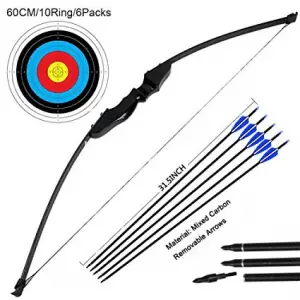
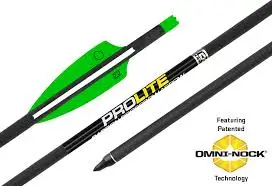
A bolt is a short, heavy arrow that is shot from a crossbow. It has an oblong head and four fins at the rear to provide stability in flight. An arrow is a long, slender projectile with fletching at the end of its shaft designed to stabilize it in flight. Arrows can be shot from either compound bows or traditional bows.
Generally, arrows are used for sport and hunting, while bolts are typically used in warfare or self-defense.
Both arrows and bolts can be made of different materials such as wood, aluminum, carbon fiber or a combination of these materials.
Additionally, some specialized arrow heads can be designed to deliver more powerful impacts than regular arrowheads. Let’s explore the “crossbow bolts vs arrows” comparison in greater detail.
Crossbow bolts are:
- Typically 16-22 inches, 20 inches being the most common
- Shorter than traditional archery arrows
- Bereft of stabilizing vanes at the back
- Heavier than bolts
Archery arrows, on the other hand, are:
- 27-32 inches is the normal arrow length
- They are lighter
Characteristics of Crossbow Bolts
Crossbow bolts are identical to arrows shot from a compound bow.
Crossbow bolts are identical to arrows shot from a compound bow. They are slightly shorter and heavier but have the same diameter as regular arrows.
Crossbow bolts come with a broad head, which is designed to make them heavier than an arrow and give them better penetration power. The broadheads have razor-sharp blades that easily cut through flesh.
Characteristics of Crossbow Arrows
- Crossbow arrows have a nock.
- They are lighter and hence the trajectory is flatter.
- Penetration power is compromised because of lighter weight.
- Affected by wind and external causes
Tips for Choosing the Right Arrows And Bolts
Now that you have a pretty good idea that defines our compound bow arrow vs crossbow bolt comparison, let’s dive in to explore how you can choose the one that best fits your shooting style.
Arrow speed is not the be-all for consideration. Manufacturers play to the gallery and hype up this facet, be it the crossbow or the bolt/arrow.
Now let’s explore some key features that can help you choose the right one for you.
Bolt Weight
The weights of the four sections of a bolt, namely shaft, fletching, nock, and broadhead/field point, make up the compound value of the total mass.
The range that best suites the bolt you use is decreed by the crossbow manufacturer.
If the weight of your bolt is close to the bottom limit, it’ll yield faster flying and greater range by sacrificing penetration!
400 grain is an average rating. Your crossbow may be rated at 350 FPS, but with a bolt weight of 500 grains, this will deescalate to 315 FPS. The material of choice is either aluminum or carbon.
How fast your bow shoots, the bolt’s total mass, and the distance traversed is a consideration of kinetic energy.
Whatever energy remains should be sufficient for penetration.
Kinetic Energy of A Bolt
The minimum kinetic energy required on the bolt is 23 lbs for small games such as deer and antelope.
This can get up to 43 lbs for larger prey such as elk and black bears.
Traveling, for every 10 yards, 3-4 % of the energy is expended by the bolt. If your bow delivers 80 pounds initially, you can determine how much residual force is available at different ranges.
All you need to know is the initial FPS and the total weight of the bolt. You can also follow this equation to measure the kinetic energy of a bolt:
KE=(mv )/450,240; m=mass of arrow in grains; v= velocity of arrow in FPS
Bolt Fletching and FOC
Normal preference is for smaller 2” vanes over the usual 4-5” larger vanes.
The governing principle here is the ‘arrow front of the center ratio’ (FOC). Smaller vanes snip off the weight from the rear end, improving FOC and accuracy.
Crossbow Nocks
Nocks come in unlimited styles and present the risk of the string jumping off.
Always use the type of nock designed for your crossbow. Because of the high delivery speed, it is difficult to distinguish the impact clearly.
Considerations Regarding Broadheads
Aside from the usual arrow tips, you’ll now find quality broadheads with expandable blades.
Their flight characteristics are different. They will not follow the same trajectory as a field point or other broadheads owing to subtle wind drag.
Static Spine Selection
This parameter is about deflection or the flexibility/ stiffness of the arrow.
The poundage and draw stroke of the bow should ideally be closely matched to the stiffness. The weak spot of the shaft is revealed by spine indexing.
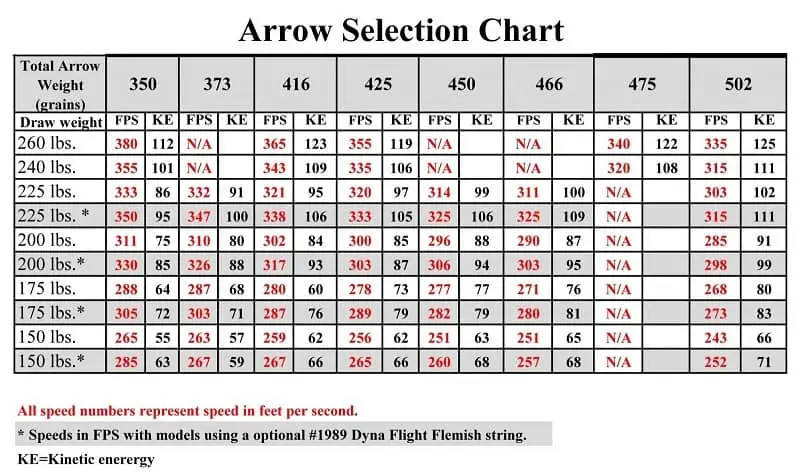
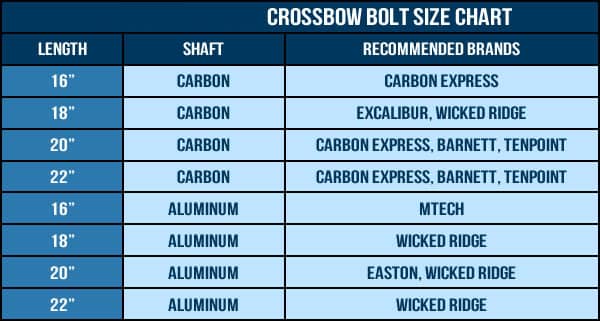
A weight chart and a size chart have been included above to narrow your selection from different types of crossbow bolts and arrows.
For a moment, let us leave behind all the confusion about bolt vs arrow. Is it a bolt? Is it an arrow? It’s The CrossbowMan.
The fine points of this sport leave much to be explored.
It transports you back to when man hunted his quarry based on his skills, unlike using a sniper rifle to bring down the game. It has a more elemental feel.
And that concludes our today’s “Crossbow Bolt vs Arrow” comparison. We tried to provide an overview of the ways a bolt and arrow are different, and where they mean the same thing.
With the advancement of modern archery, crossbows have now become a major sports category, and most people refer to the projectiles as “arrows” instead of bolts.
However, the purists have other opinion. We strongly recommend further reading up.
Thanks for reading this far. I hope this information proves to be helpful to those who are seeking expert guidance. I wish you a great weekend ahead, and happy shooting!
FAQs
Are All Crossbow Bolts The Same?
No, not all crossbow bolts are the same. The type of bolt chosen for a particular crossbow is determined by the intended use and personal preference. Crossbow bolts come in different lengths, weights, and materials to suit specific shooting styles.
What Are Crossbow Arrows Called?
Crossbow arrows are also commonly referred to as bolts, quarrels, or quarrel arrows. Though they are all essentially the same type of projectile, there are some slight difference between arrow and bolt, and they both differ from quarrels.
Do Crossbows Shoot Arrows Or Bolts?
Crossbows shoot both arrows and bolts. While the terms are often used interchangeably, there are subtle differences between them. Arrows typically have three vanes on the shaft for stability during flight and a pointed tip for penetration. Bolts typically have four vanes on the shaft and a flat point that is designed to spread out impact force upon contact.

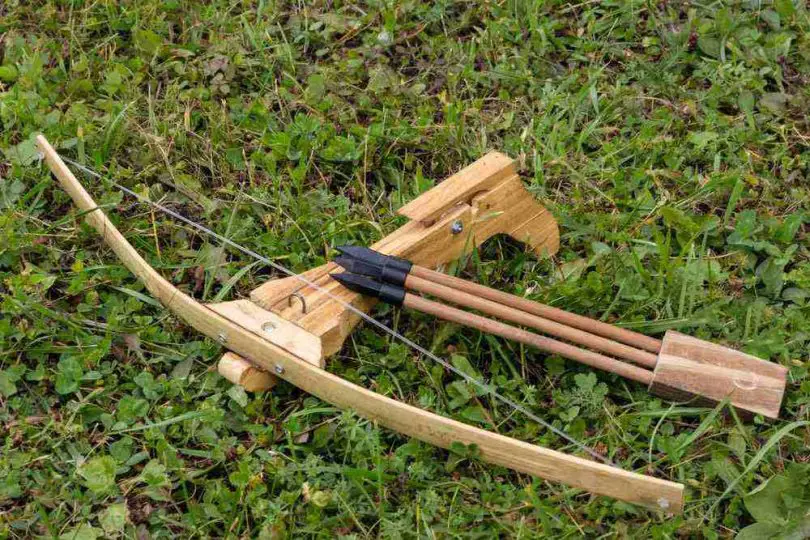






Leave a Comment